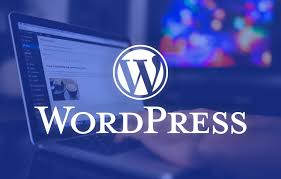In today’s digital world, having a website is essential for businesses, bloggers, creators, and even non-profits. One of the easiest and most popular ways to build a website is by using WordPress. But what exactly is WordPress?
WordPress is a free, open-source content management system (CMS) that allows users to create and manage websites without needing to know how to code. Originally launched in 2003 by Matt Mullenweg and Mike Little as a blogging platform, WordPress has since evolved into a powerful website-building tool that powers over 43% of all websites on the internet.
There are two versions of WordPress:
-
WordPress.org – the self-hosted version, which gives you complete control over your site, but requires you to purchase web hosting and a domain name.
-
WordPress.com – a hosted version, which takes care of the hosting for you but with limited flexibility unless you upgrade to premium plans.
Why Choose WordPress?
WordPress is popular for several reasons:
-
User-Friendly: Even complete beginners can build a website using drag-and-drop themes and plugins.
-
Highly Customizable: Thousands of free and premium themes and plugins allow you to add features like contact forms, SEO tools, galleries, and more.
-
SEO Friendly: WordPress is designed with clean code and offers tools like the Yoast SEO plugin to help improve your search engine rankings.
-
Large Community: With millions of users around the world, there’s a large support community, tutorials, and forums to help you.
-
Regular Updates: WordPress regularly releases updates for features, performance, and security.
What Can You Build with WordPress?
Though it started as a blogging tool, WordPress is now capable of building nearly any kind of website, such as:
-
Personal blogs or portfolios
-
Business websites
-
Online stores (using WooCommerce)
-
News and magazine sites
-
Educational platforms and online courses
-
Membership or community portals
Key Components of WordPress
To understand how WordPress works, here are some basic components:
-
Themes: These control the design and layout of your website. You can switch themes without affecting your content.
-
Plugins: These are add-ons that extend the functionality of your site. For example, adding a contact form, image slider, or social media share buttons.
-
Widgets & Menus: These help you control the content and structure of your site’s navigation and sidebars.
-
Dashboard: This is the backend interface where you manage your posts, pages, media, settings, and appearance.
In summary, WordPress is a powerful and flexible platform that makes it easy for anyone to create a professional website or blog. Whether you’re a beginner looking to start a simple personal blog or a business owner building an eCommerce site, WordPress offers the tools and resources to make it happen—without needing to write a single line of code.


